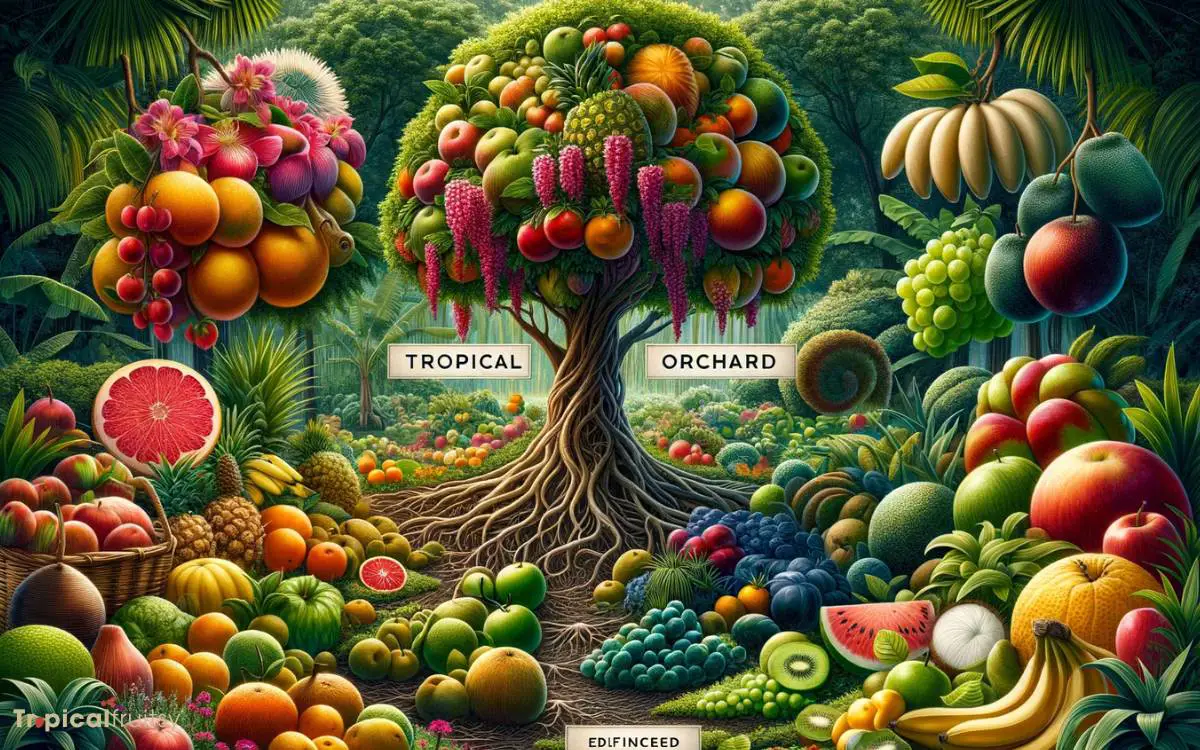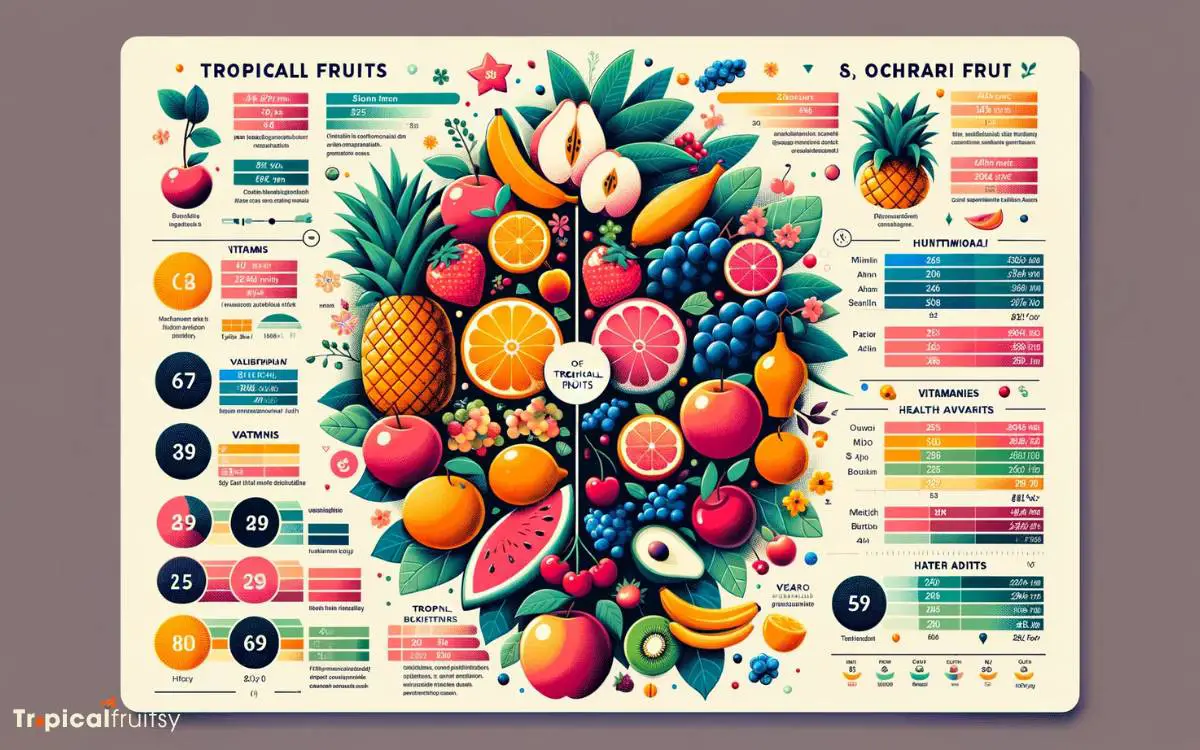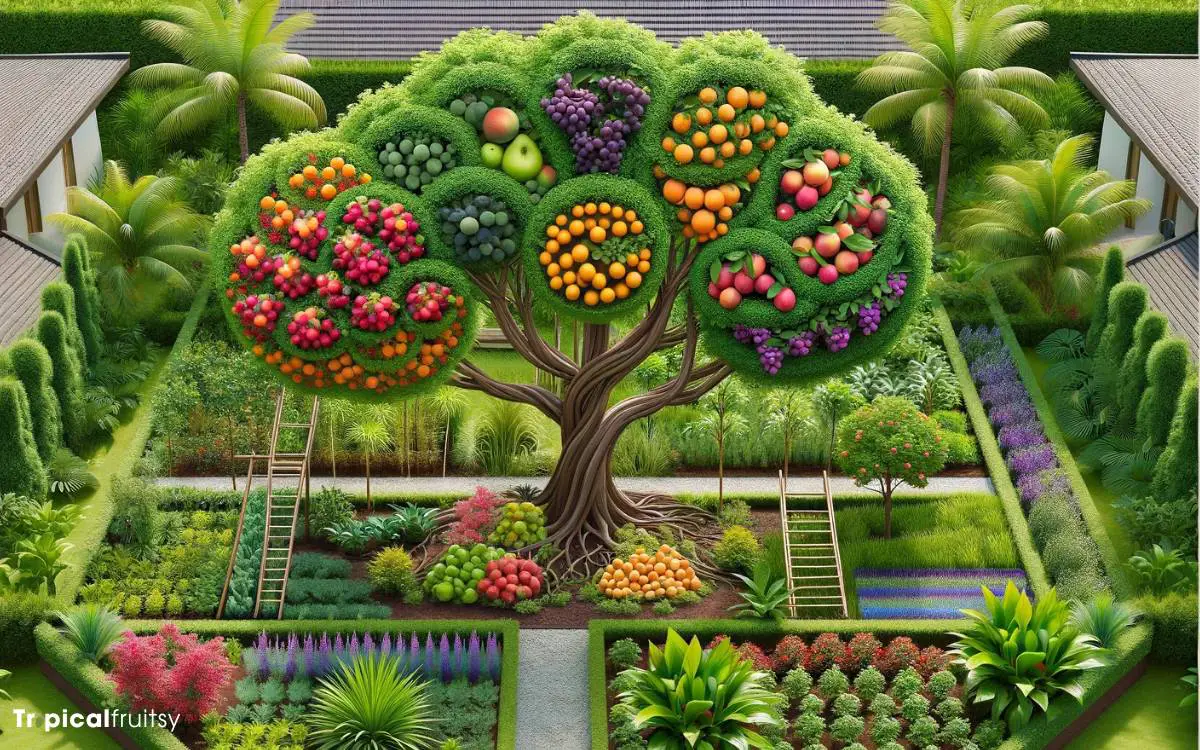Tropical Fruit Like a Tree and an Orchard Fruit: Comparison!
Tropical fruits, typically grown on trees in warm climates, are distinct from orchard fruits that flourish in temperate regions.
Mangoes and papayas exemplify tropical varieties, while apples and pears represent common orchard fruits.
Each requires specific environmental conditions and care for successful cultivation, presenting unique nutritional benefits and challenges for growers and consumers alike.
Tropical fruits thrive in areas with consistent heat and humidity, and their trees are not suited to withstand cold temperatures.
In contrast, orchard fruits develop in cooler climates, where trees often need a period of dormancy induced by cold weather to bear fruit successfully.
Understanding the distinct needs of tropical and orchard fruits can optimize their growth for bountiful harvests and nutritional rewards.

Key Takeaway
Comparison of Tropical and Orchard Fruits
| Fruit Type | Examples | Climate Needs | Cultivation Challenges | Nutritional Benefits |
|---|---|---|---|---|
| Tropical | Mango, Papaya | Warm and humid | Frost sensitivity | High in vitamins A and C |
| Orchard | Apple, Pear | Cold winters | Chill hours required | Rich in dietary fiber |
Defining Tropical and Orchard Fruits

Tropical fruits originate from regions with warm climates and are typically grown near the equator, while orchard fruits are cultivated in temperate zones and are associated with structured agricultural practices.
Tropical species, such as mangos, bananas, and pineapples, thrive in areas of high humidity and temperature, requiring specific photoperiods for flowering and fruit set.
Orchard fruits, including apples, pears, and cherries, necessitate a period of winter chill for dormancy break and successful bud development.
These deciduous species are cultivated using advanced horticultural techniques like pruning, grafting, and controlled pollination to optimize yield and fruit quality.
Understanding these fundamental differences is crucial for effective cultivation and propagation.
Let’s now delve into the climatic needs for growth, which underpin the successful cultivation of these diverse fruit categories.
Climatic Needs for Growth

The successful cultivation of both tropical and orchard fruits hinges on understanding and meeting their distinct climatic requirements.
Tropical fruits typically necessitate a consistently warm environment with temperatures never dipping below 15°C to ensure proper growth and fruit maturation.
They thrive in areas with high humidity and abundant rainfall, although well-drained soil is crucial to prevent root rot.
Conversely, temperate orchard fruits require a cold period, known as chill hours, to break dormancy and promote flowering and fruit set.
Sufficient sunlight and a growing season free of late frosts are critical. Orchard fruits often demand a temperate climate with distinct seasons.
Both types necessitate protection against climatic extremes, such as frost or excessive heat, and benefit from microclimate management and adaptive agricultural practices.
Nutritional Benefits Comparison

Both tropical and orchard fruits offer diverse nutritional profiles, each providing essential vitamins, minerals, and fiber beneficial to human health.
For instance, tropical fruits are typically rich in vitamins A and C, which are crucial for immune function and skin health, along with a higher moisture content that contributes to hydration.
Orchard fruits, on the other hand, often exhibit a higher concentration of temperate climate-adapted phytonutrients such as quercetin and pectin, which have been linked to cardiovascular health and digestive wellness.
The macronutrient distribution sugars and fiber content in these fruits is also a key consideration, as it influences both the glycemic index and the satiety factor.
With an understanding of these nutritional advantages, the agronomic implications for cultivation and care techniques can be better tailored to maximize the health benefits yielded from each fruit variety.
Cultivation and Care Techniques

Optimization of cultivation and care techniques is pivotal for enhancing the yield and quality of tropical and orchard fruits.
Careful consideration of soil composition and structure is essential, ensuring adequate drainage while retaining necessary moisture and nutrients.
Regular soil testing allows for precise fertilization, tailoring macro and micronutrient applications to the specific needs of the fruit-bearing plants.
Pruning strategies must be implemented with scientific precision, removing excess foliage to facilitate sunlight penetration and air circulation, which are critical to fruit development and disease prevention.
Integrated pest management (IPM) practices should be employed to minimize chemical inputs while effectively controlling pest populations.
Irrigation systems need to be meticulously designed and managed to provide uniform water distribution without over-saturation, which can lead to root diseases and reduced fruit quality.
Which Tropical Fruit Option is Better for Growing at Home: Tree or Orchard Fruit?
When it comes to deciding whether to grow tree or orchard tropical fruit at home, it’s important to consider the advantages of each. Tree fruit offers the convenience of easy maintenance, while orchard fruit provides a variety of options in a single space. The tropical fruit box comparison depends on your space and preference.
Incorporating Diversity in Your Garden

Incorporating a diverse array of tropical and orchard fruits into your garden not only enhances the aesthetic appeal but also promotes ecological balance and resilience against pests and diseases.
Strategic planning is required to create a harmonious environment that allows for the coexistence of various species.
This involves understanding the specific horticultural needs of each fruit type, such as sunlight exposure, water requirements, soil pH, and nutrient profiles.
Integrating plants with complementary needs can maximize resource use and minimize maintenance.
Additionally, employing polyculture techniques, where multiple crop species are planted in proximity, can lead to natural pest control and improved pollination, thereby increasing yield.
Gardeners must also consider the spatial arrangement, ensuring sufficient air circulation and sunlight penetration for optimal fruit development.
Conclusion
Cultivating tropical and orchard fruits showcases horticultural ingenuity and provides valuable nutritional benefits.
These fruits contribute to agricultural diversity and environmental sustainability, reflecting the intricate tapestry of the natural world.






